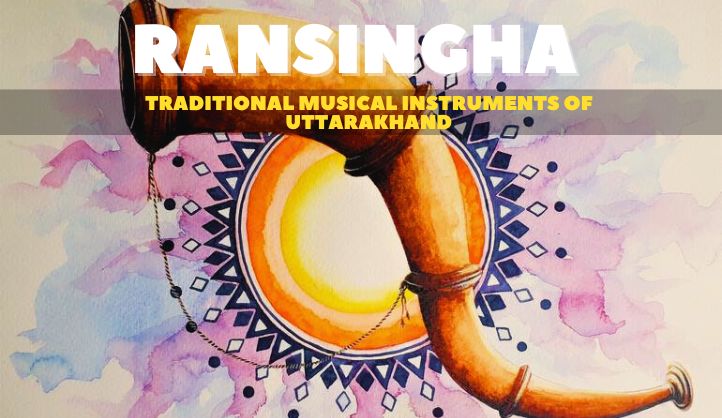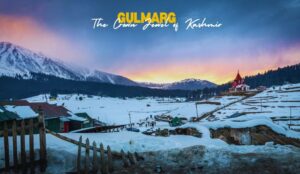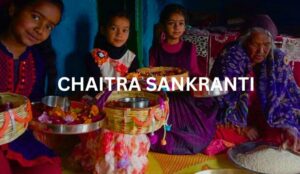The Ransingha, a traditional wind instrument from the mountainous state of Uttarakhand, carries within its form a rich history and cultural significance. Its sound, a deep and resonant blare, has echoed through the valleys of Uttarakhand for centuries, serving as a symbol of celebration, war, and religious devotion. This blog post delves into the captivating world of the Ransingha, exploring its origins, craftsmanship, and enduring role in the cultural tapestry of Uttarakhand.
A Shape Steeped in History
The Ransingha is a metallic instrument, crafted primarily from copper or copper alloys. Its form is a distinctive “S” shape, believed to have originated on the battlefield. This design is not merely aesthetic; it is believed to contribute to the instrument’s powerful and far-reaching sound. The Ransingha’s length typically ranges from 18 to 24 inches (45 to 60 centimeters), and its weight can vary from 2 to 3 pounds (0.9 to 1.4 kilograms).
A Sound for Every Occasion
This musical instrument’s voice is not confined to the battlefield. Today, it plays a vibrant role in various auspicious occasions in Uttarakhand. From the joyous ceremonies of weddings and childbirth to the intimate celebrations of naming ceremonies, the Ransingha’s sound adds a touch of grandeur and cultural significance to these events. It is also a prominent feature in the vibrant dance form of Chholia, a traditional dance of Uttarakhand.
Beyond its celebratory role, this musical instrument is believed to hold health benefits. The act of blowing the instrument is said to be beneficial for lung function, adding another layer to its significance.
A Divine Connection
The Ransingha’s cultural significance extends to the realm of religion. It is considered a symbol of Lord Narasimha, a revered deity in Hinduism depicted as half-man and half-lion. This association imbues the instrument with a sense of sanctity and spiritual connection.
The Artisan’s Touch
The traditional art of crafting this musical instrument is concentrated in the Almora district of Uttarakhand. Today, only a handful of artisans possess the skills and knowledge necessary to create this unique instrument. Their dedication ensures that the legacy of the Ransingha continues to resonate through the generations.
A Legacy Under Threat
Despite its rich history and cultural significance, the future of this musical instrument faces challenges. The number of artisans skilled in its creation is dwindling, and the younger generation shows a decreasing interest in carrying forward this traditional art form. This decline poses a threat to the very existence of this musical instrument.
Preserving a Tradition
Efforts are underway to preserve the legacy of this musical instrument. Government initiatives and workshops aim to revive interest in the instrument’s creation and playing. Additionally, promoting this musical instrument in cultural events and fostering appreciation for its unique sound are crucial steps in ensuring its survival.
List of Traditional Musical Instruments in Rishikesh
-
Dhol – This is a double-headed drum, a mainstay in celebrations like Holi, Diwali, weddings, and processions. The Dhol player, known as the Dholwala, uses two sticks to create a powerful and rhythmic beat that energizes any gathering.
-
Damama – This percussion instrument is made of wood, parchment, and softwood. It consists of two leathered brass cones, one larger and one smaller, producing distinct sounds when struck with sticks.
-
Hurka – Shaped like a small hourglass drum, the Hurka produces a distinct staccato beat. It’s a common accompaniment in songs and dances and is often played alongside the flute or bagpipe.
-
Turturi or Turhi – This wind instrument, crafted from bronze or brass, adds a melodious touch to Uttarakhand’s music.
-
Binaee – This small, iron instrument, made by local blacksmiths, creates a captivating sound when played.
-
Mushak Been or Bagpipe – This unique instrument, also known as Mashak Baja, is a type of bagpipe found in Uttarakhand and neighboring regions. It adds a haunting and evocative sound to folk music.
-
Murali or Flute – While not exclusive to Uttarakhand, the Murali, also known as the Bansuri, is a revered instrument associated with Lord Krishna. Its presence adds a touch of serenity and pastoral charm to the music.
Conclusion
The Ransingha is more than just a musical instrument, it is a resonant thread woven into the cultural fabric of Uttarakhand. Its sound embodies the state’s history, traditions, and spiritual beliefs. By recognizing its significance and supporting the artisans who keep this tradition alive, we can ensure that this musical instrument continues to resonate for generations to come.
FAQs About Ransingha
1. What is the Ransingha made of?
The Ransingha is primarily made of copper or copper alloys.
2. What is the significance of this musical instrument’s shape?
This musical instrument’s “S” shape is believed to contribute to its powerful and far-reaching sound.
3. On what occasions is this musical instrument played?
This musical instrument is played on various auspicious occasions like weddings, childbirth, naming ceremonies, and traditional dances.
4. What is the religious connection of the Ransingha?
The Ransingha is considered a symbol of Lord Narasimha, a revered Hindu deity.
5. Where are Ransinghas made?
Traditionally, this musical instrument is made by artisans in the Almora district of Uttarakhand.





